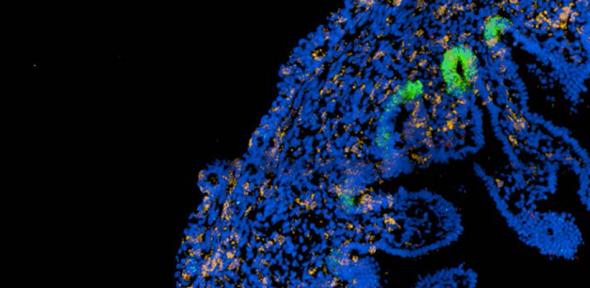Clik here to view.

We are increasingly using more smart devices like smartphones, smart speakers, and wearable health and wellness sensors in our homes, offices, and public buildings. However, the batteries they use can deplete quickly and contain toxic and rare environmentally damaging chemicals, so researchers are looking for better ways to power the devices.
One way to power them is by converting indoor light from ordinary bulbs into energy, in a similar way to how solar panels harvest energy from sunlight, known as solar photovoltaics. However, due to the different properties of the light sources, the materials used for solar panels are not suitable for harvesting indoor light.
Now, researchers from the University of Cambridge, Imperial College London and Soochow University in China have discovered that new green materials currently being developed for next-generation solar panels could be useful for indoor light harvesting. They report their findings in Advanced Energy Materials.
“By efficiently absorbing the light coming from lamps commonly found in homes and buildings, the materials can turn light into electricity with an efficiency already in the range of commercial technologies,” said co-author Dr Robert Hoye from Imperial College London. “We have also already identified several possible improvements, which would allow these materials to surpass the performance of current indoor photovoltaic technologies in the near future.”
The team investigated perovskite-inspired materials, which were created to circumvent problems with materials called perovskites, which were developed for next-generation solar cells. Although perovskites are cheaper to make than traditional silicon-based solar panels and deliver similar efficiency, perovskites contain toxic lead substances. This drove the development of perovskite-inspired materials, which are instead based on safer elements like bismuth and antimony.
Despite being more environmentally friendly, these perovskite-inspired materials are not as efficient at absorbing sunlight. However, the team found that the materials are much more effective at absorbing indoor light, with efficiencies that are promising for commercial applications. Crucially, the researchers demonstrated that the power provided by these materials under indoor illumination is already sufficient to operate electronic circuits.
"The Internet of Things is critical for many areas, such as improved healthcare, energy conservation, transportation or control of smart buildings," said co-authro Professor Judith Driscoll from Cambridge's Department of Materials Science and Metallurgy. "New generations of wireless connected IoT devices function with low-power electronics ideally suited to operate with energy-scavenging devices."
"Access to sustainable and efficient indoor photovoltaic energy harvesters offers unique opportunities to operate these IoT devices by collecting ambient energy from daily environments extending their operating lifetime and reducing maintenance costs," said co-author Dr Luigi Occhipinti from Cambridge's Department of Engineering.
“Our discovery opens up a whole new direction in the search for green, easy-to-make materials to sustainably power our smart devices,” said co-author Professor Vincenzo Pecunia from Soochow University.
In addition to their eco-friendly nature, these materials could potentially be processed onto unconventional substrates such as plastics and fabric, which are incompatible with conventional technologies. Therefore, lead-free perovskite-inspired materials could soon enable battery-free devices for wearables, healthcare monitoring, smart homes, and smart cities.
This research was funded by EPSRC and National Natural Science Foundation of China.
Reference:
Yueheng Peng et al. ‘Lead‐Free Perovskite‐Inspired Absorbers for Indoor Photovoltaics.’ Advanced Energy Material (2020). DOI: 10.1002/aenm.202002761
Originally published on the Imperial College London website.
A bold response to the world’s greatest challenge
The University of Cambridge is building on its existing research and launching an ambitious new environment and climate change initiative. Cambridge Zero is not just about developing greener technologies. It will harness the full power of the University’s research and policy expertise, developing solutions that work for our lives, our society and our biosphere.
Researchers have developed environmentally friendly materials that could harvest enough energy from indoor light to power wireless smart devices.
Image may be NSFW.
Clik here to view.
The text in this work is licensed under a Creative Commons Attribution 4.0 International License. Images, including our videos, are Copyright ©University of Cambridge and licensors/contributors as identified. All rights reserved. We make our image and video content available in a number of ways – as here, on our main website under its Terms and conditions, and on a range of channels including social media that permit your use and sharing of our content under their respective Terms.


















